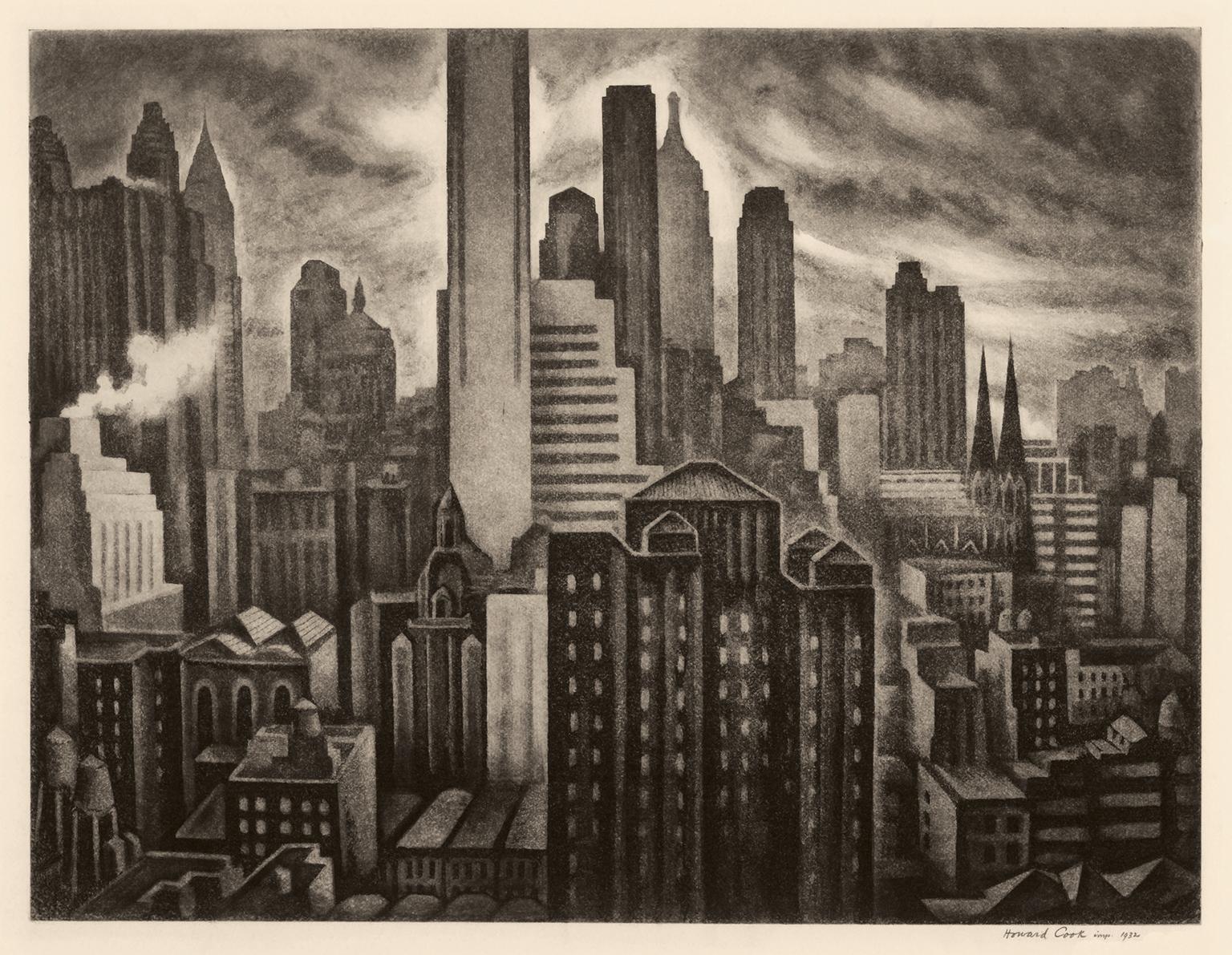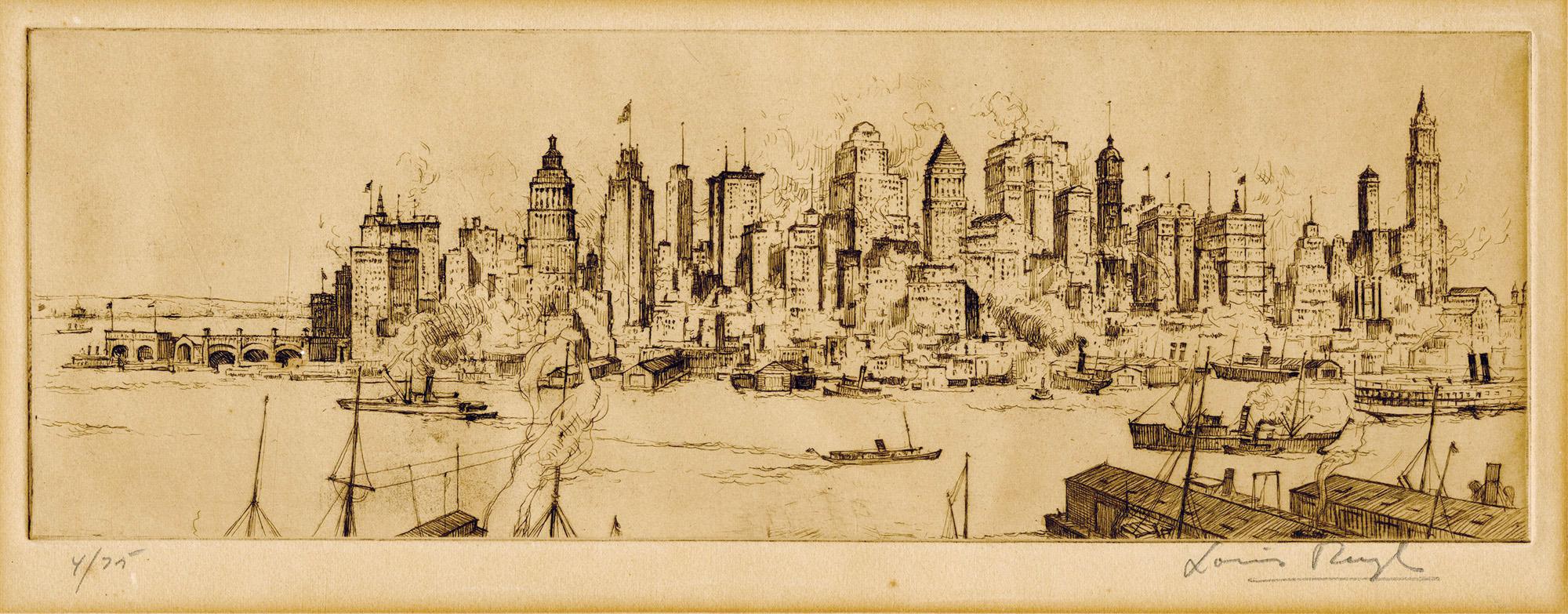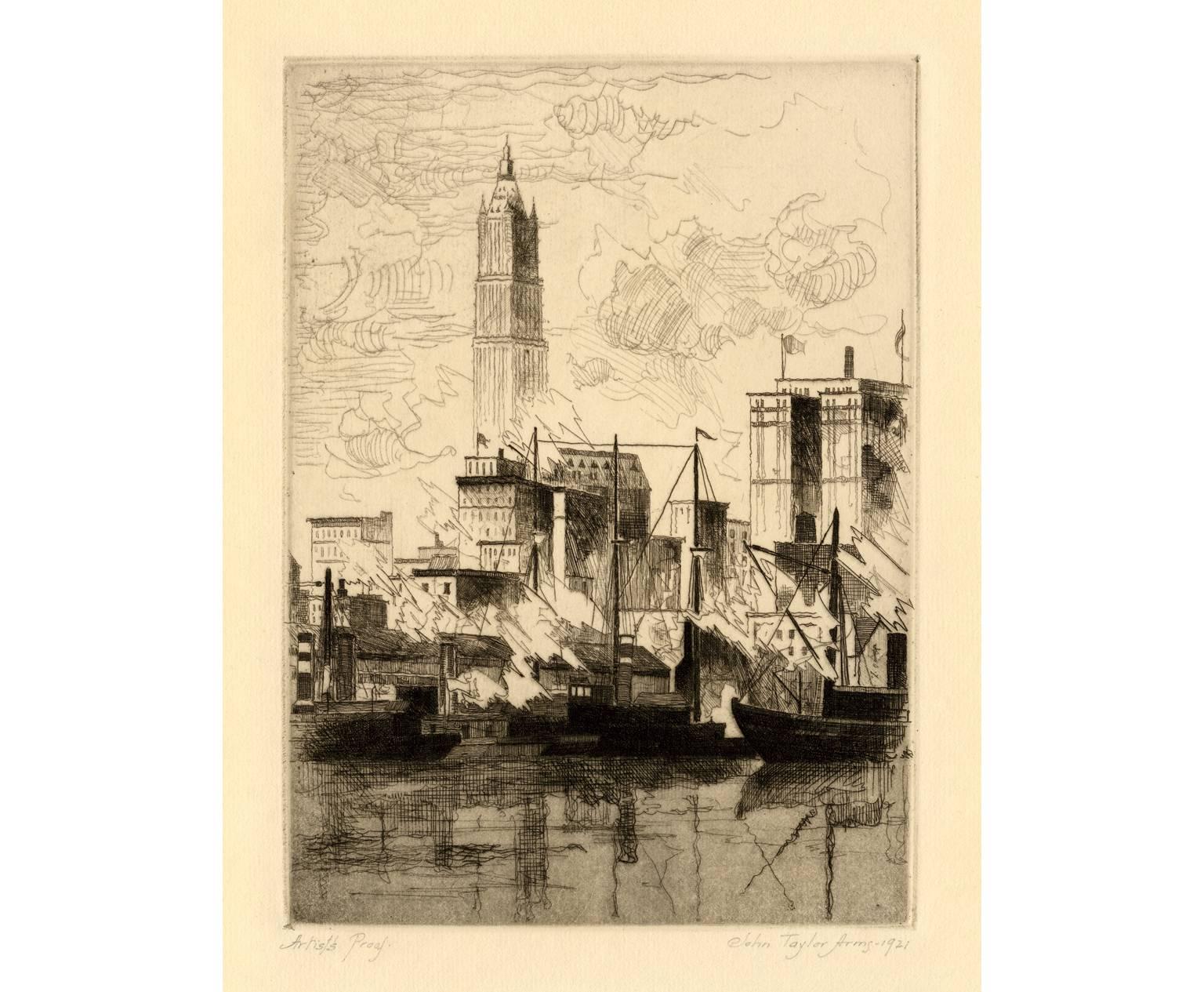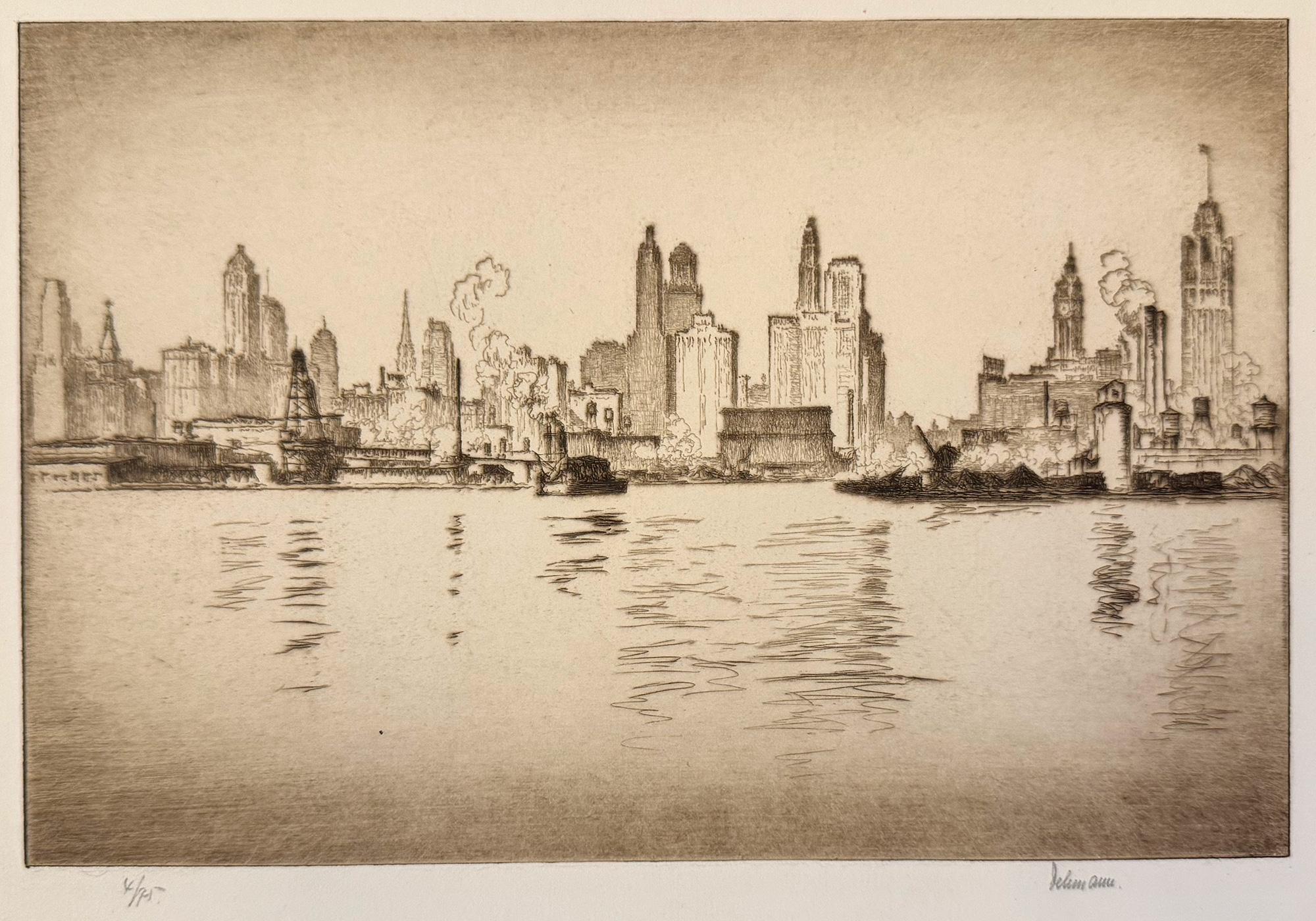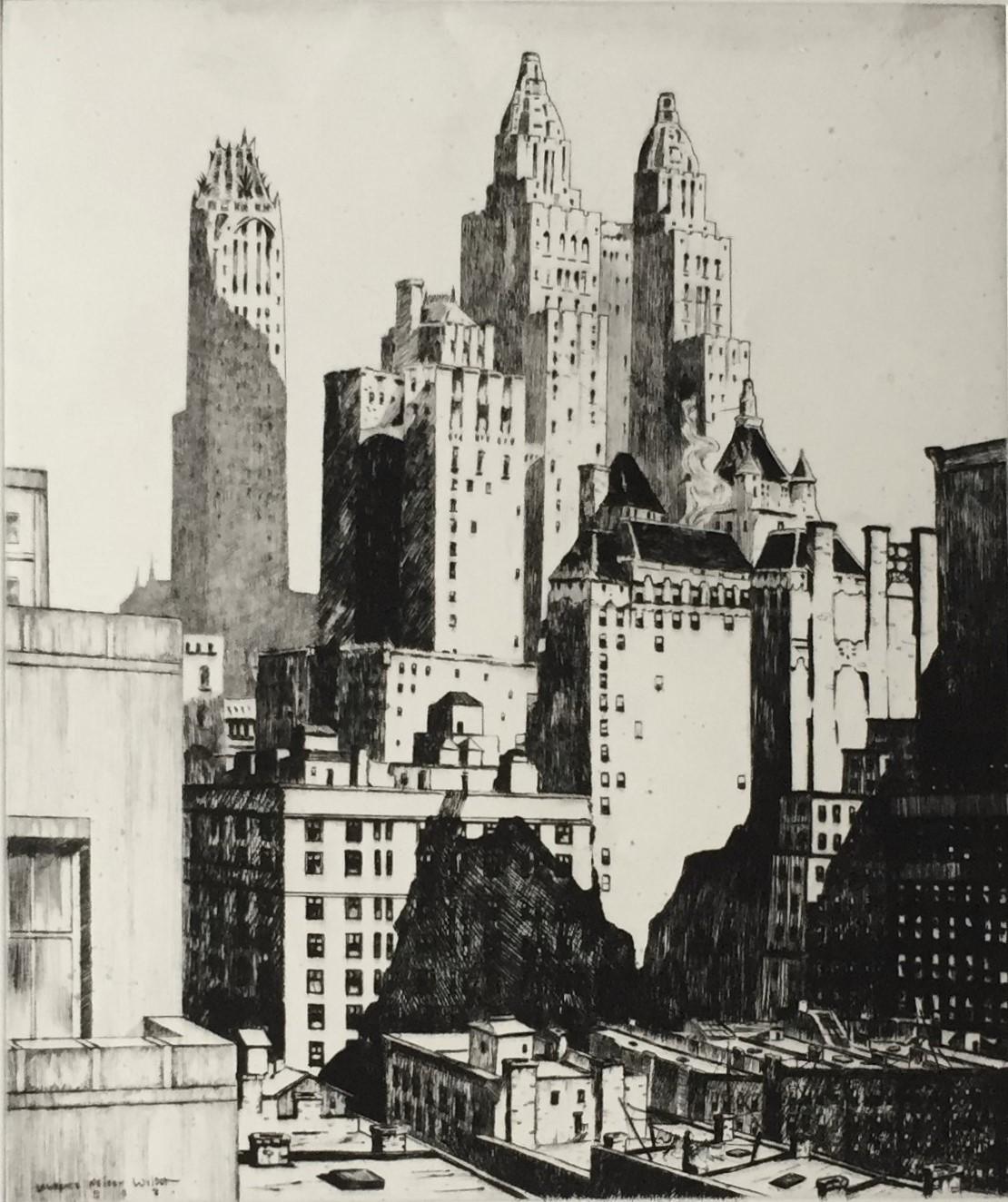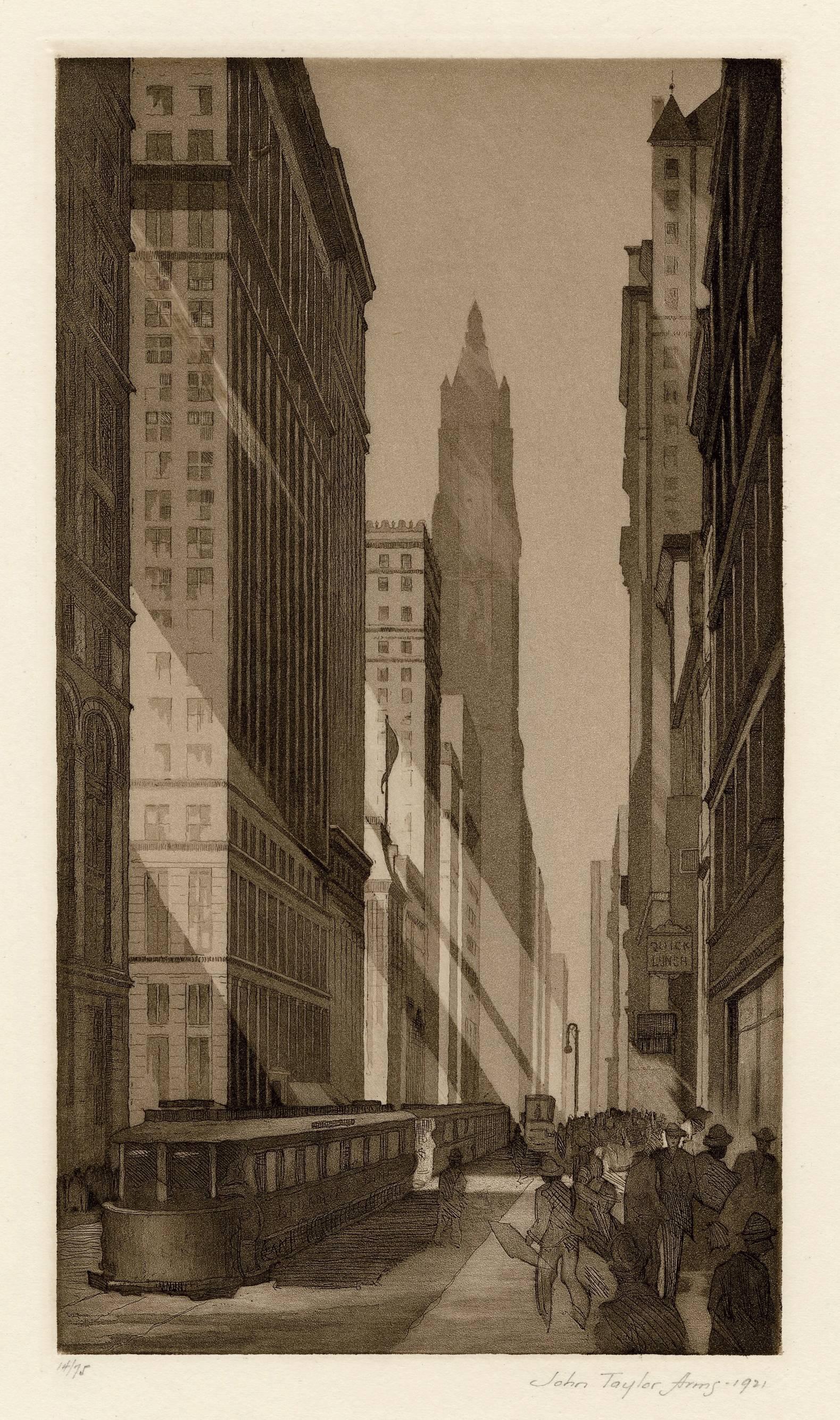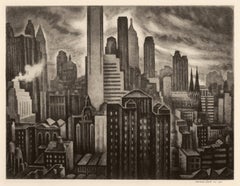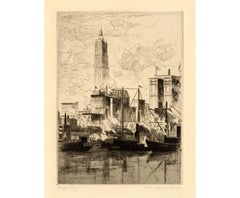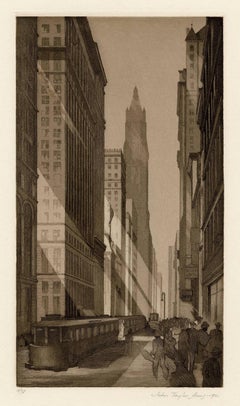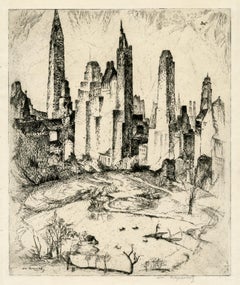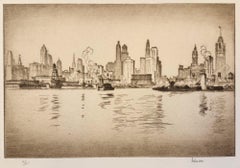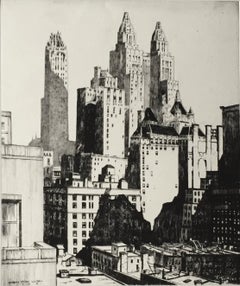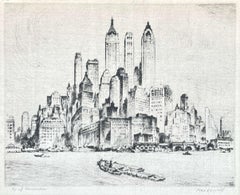Adriaan Lubbers'Skyline from Jersey Heights' — 1930s Modernism1930
1930
About the Item
- Creator:Adriaan Lubbers (Dutch)
- Creation Year:1930
- Dimensions:Height: 10.38 in (26.37 cm)Width: 12 in (30.48 cm)
- Medium:
- Movement & Style:
- Period:
- Condition:
- Gallery Location:Myrtle Beach, SC
- Reference Number:Seller: 1013251stDibs: LU53239248622
Adriaan Lubbers
Adriaan Lubbers was born in The Netherlands and was the son of a well-to-do estate agent. As a young man, he studied mechanical engineering, which took him to South America from 1911–14. By 1914, he realized that he wanted to return to The Netherlands to fulfil his lifelong dream of becoming an artist. His early art career included exhibiting his works in March 1922 in Amsterdam. During that period he settled with other artists in a farmhouse at Vierhouten. There he met painter Leo Gestel with whom he travelled to New York. At 33, Lubbers produced his first drawings which depicted New York’s landmarks in a realistic style. In order to survive in New York City, Lubbers worked odd jobs to support himself and his work. According to Italo Tovolato, he was a worker in a factory, a joiner, a herring peddler, a mechanic and a cabaret singer in Hoboken harbor. Some of these places are represented in his work. Lubbers lived in New York fewer than six years, mostly from 1916 to 1919 and 1926 to 1928, but during these stays, he made not only paintings but also copious drawings. He married Miep Gantvoort in New York in 1922. Lubbers died suddenly in 1954 of a brain haemorrhage while visiting Manhattan. His works remain a great record of New York architecture.
- ShippingRetrieving quote...Shipping from: Myrtle Beach, SC
- Return Policy
More From This Seller
View All1930s American Modern Figurative Prints
Etching, Aquatint
1920s American Realist Landscape Prints
Etching
Early 20th Century American Modern Landscape Prints
Etching
1930s American Modern Landscape Prints
Etching
1920s American Realist Landscape Prints
Lithograph
1920s Modern Figurative Prints
Lithograph
You May Also Like
Early 20th Century American Modern Landscape Prints
Handmade Paper, Etching, Drypoint
Early 20th Century American Modern Landscape Prints
Handmade Paper, Etching, Drypoint
20th Century American Modern Figurative Prints
Drypoint, Etching
1940s American Modern Landscape Prints
Etching, Paper
1920s American Modern Figurative Paintings
Canvas, Oil
1930s American Modern Landscape Prints
Lithograph
